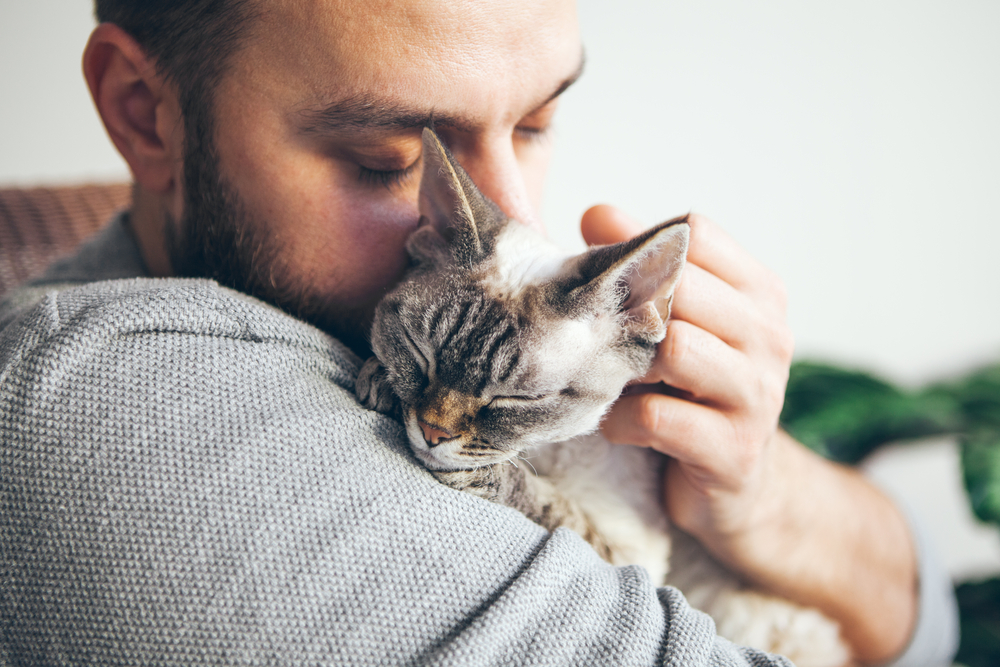If you’ve ever had the triumph of a newly vacuumed floor disrupted by a tumbleweed of cat hair drifting around the corner, you know that a truly clean house is difficult to achieve when you live with pets. For the approximately 10 to 20 percent of adults worldwide who have allergies to cats, the consequences are more serious than simple tidiness, impacting both human health as well as the human-cat bond.
Microscopic allergens produced primarily in a cat’s saliva and skin are spread on the cat via grooming and contaminate the environment through shedding. They can also be spread onto people directly through contact, such as a cat brushing up against a person or licking them. In some people, contact with feline allergens triggers fits of sneezing, itchy eyes and throat, or skin rashes. In more sensitized individuals, these allergens can cause wheezing, coughing, asthma attacks, and even anaphylaxis, leading some households with a severely allergic family member to make the painful decision to rehome or relinquish their cat to a shelter. In a 2021 review of human allergies to cats and cat ownership, allergies were listed as one of the top five reasons for relinquishment in the US-based studies and were often cited as a reason for avoiding pet ownership.
Contrary to popular belief, currently there’s no such thing as a “hypoallergenic” cat because all cats produce some allergens, so solutions rely on symptomatic treatment of allergies and environmental decontamination. Nasal sprays, antihistamines, and allergen immunotherapy may give some relief, as can frequent cleaning of walls and surfaces, washing bedding and curtains, vacuuming with a HEPA filter, and steam cleaning carpet when it can’t be replaced with bare floors. Other suggestions such as avoiding contact with the cat, banning the cat from the bedroom, and weekly bathing to reduce allergen shedding can be more challenging. Even using Fear Free techniques, bathing is often stressful for cats, and isolating from a beloved feline family member can cause further stress to both the cat and the cat parent.
In 2020 Purina released LiveClear, a promising over-the-counter feline food that tackles the environmental problem using a novel approach. When cats eat LiveClear, a dietary protein derived from eggs binds to and neutralizes Fel d1, the protein produced primarily in cat skin and saliva that is the main culprit for cat allergies in people. By the third week of daily feeding, cats enrolled in the trials showed a decrease of active Fel d1 that reached an average of 47 percent by 10 weeks of feeding, bringing hope to allergic cat lovers everywhere without the need for a veterinary prescription.
While no approach eliminates cat allergens completely, combining Pro Plan Live Clear with other management tools may allow for an improved quality of life for all members of the household and hopefully greater retention of cats in their home. And who knows what the future may hold? Scientists are continuing their battle against Fel d1, with work that focuses on creating hypoallergenic cats by vaccinating them against their own Fel d1 and using gene therapy to target the genes that encode the allergic protein.
This article was reviewed/edited by board-certified veterinary behaviorist Dr. Kenneth Martin and/or veterinary technician specialist in behavior Debbie Martin, LVT.








